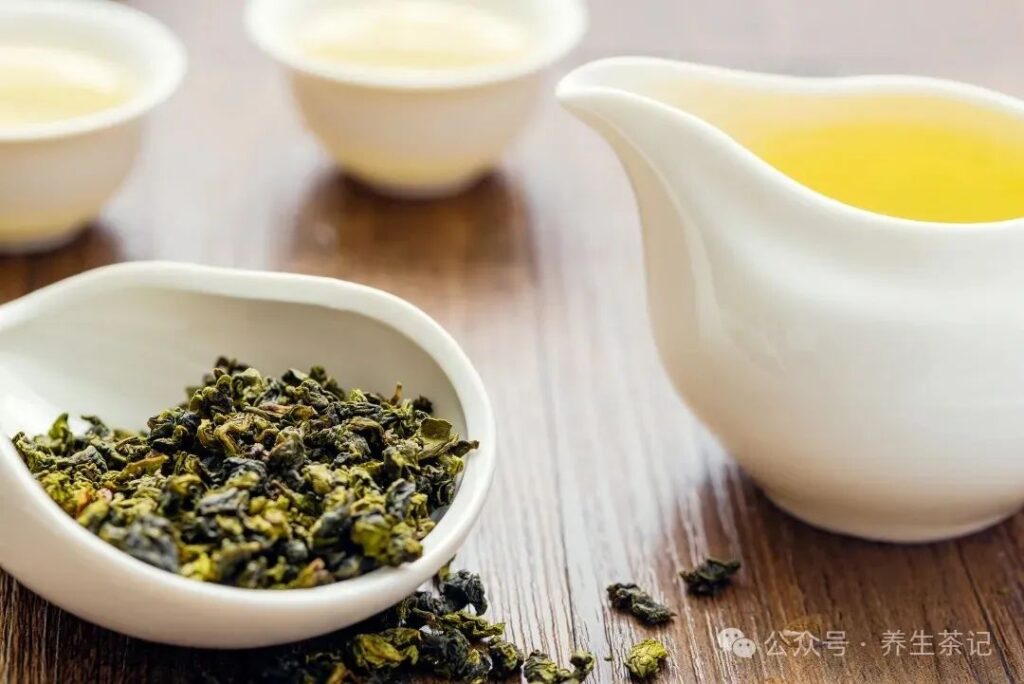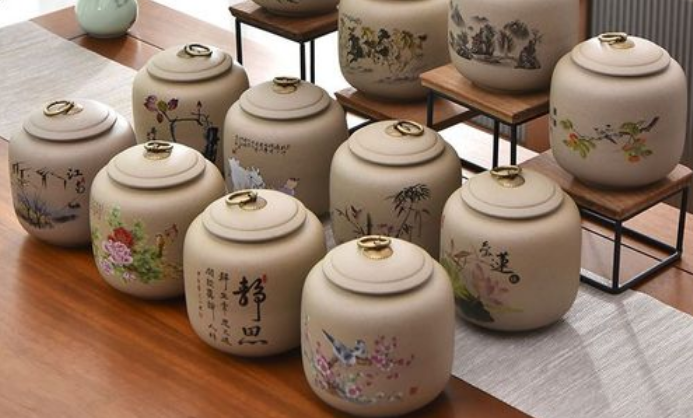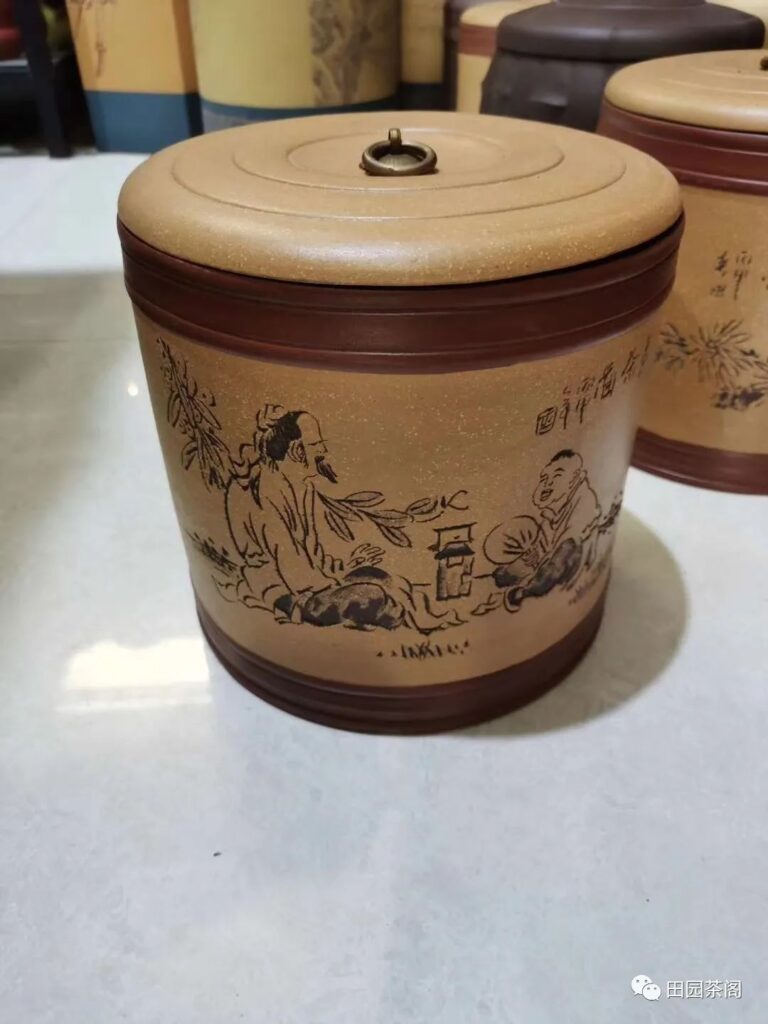In the gentle aroma of tea, savoring the tranquility and beauty of life is the daily enjoyment of many tea lovers. However, there are many easily overlooked details in tea storage. Among them, the question of “whether tea can be stored in the refrigerator” seems simple but actually puzzles countless tea enthusiasts.
I. The Temptation of Refrigerating Tea Before discussing whether tea can be stored in the refrigerator, let’s first understand why many people think of putting tea in the refrigerator first. The refrigerator, a modern household preservation magic weapon, can provide a low-temperature, dry, and relatively sealed environment, seemingly an excellent place to keep items fresh. For tea, a low-temperature environment can theoretically slow down the oxidation rate of tea and maintain the color and aroma of tea. Especially in the hot summer, when the outside temperature is high, putting tea in the refrigerator seems to find a cool “shelter” for them. Moreover, for various exquisitely packaged teas on the market today, merchants often emphasize the need for refrigeration, which also misleads consumers to a certain extent, making everyone think that the refrigerator is the ideal destination for tea. II. The Drawbacks of Refrigerating Tea However, is this really the case? In fact, storing tea in the refrigerator has many potential problems. Firstly, the internal environment of the refrigerator is humid. Although the refrigerator can lower the temperature, it also causes moisture to condense. Tea has strong hygroscopicity. Once it absorbs too much moisture, it is prone to mildew, thus affecting the quality and taste of tea. Secondly, there are mixed odors in the refrigerator. Tea has extremely strong adsorption ability and is easy to absorb various odors in the refrigerator, such as the smell of food and the aroma of fruits and vegetables. Once the tea is contaminated with odors, its original pure aroma will be damaged, and the brewed tea soup will also become strange and unpleasant. Furthermore, frequent taking and putting of tea will cause drastic changes in the temperature and humidity of tea. After taking out the tea from the low-temperature environment of the refrigerator, if it is not sealed in time, water droplets will condense on the surface of the tea, which undoubtedly increases the risk of tea getting damp and deteriorating. III. The Characteristics and Storage Requirements of Different Teas To more scientifically judge whether tea is suitable for storage in the refrigerator, it is necessary for us to understand the characteristics and storage requirements of different types of tea. 1. Green Tea Green tea belongs to non-fermented tea. Its tea leaves are tender, and it contains high levels of nutrients such as tea polyphenols and vitamins. To maintain the fresh taste and emerald color of green tea, unopened green tea can generally be stored in the refrigerator. But pay attention to sealing to prevent moisture and odor contamination. For example, well-known green teas such as West Lake Longjing and Biluochun. If they are not to be consumed in a short time, putting them in the refrigerator can effectively extend their freshness period.2. Black Tea
Black tea is a fully fermented tea, which undergoes fermentation and baking processes, resulting in a relatively stable nature of the tea leaves. Therefore, black tea does not require refrigeration and can be stored at room temperature. Storing black tea in a refrigerator may affect the release of its aroma. Varieties such as Lapsang Souchong and Keemun black tea, when placed in a dry, ventilated, and odor-free environment, can be well preserved.
3. Oolong Tea
Oolong tea is a semi-fermented tea with a complex production process and unique aroma. Most oolong teas are not suitable for refrigeration, such as Wuyi Rock tea and Tieguanyin. They should be stored at room temperature with attention to moisture prevention and avoiding light exposure. In particular, Wuyi Rock tea, which is baked with charcoal fire, contains a unique ‘fire energy’ within the leaves. Storing it in a refrigerator can affect its subsequent transformation and quality improvement.
4. Dark Tea
Dark tea is a post-fermented tea, such as Pu-erh tea and Anhua dark tea. These types of tea require appropriate humidity and temperature during storage to promote microbial fermentation, thus forming unique quality and flavor. Therefore, dark tea is not suitable for refrigeration and should be stored in a ventilated, dry, and odor-free environment.
IV. Ancient Wisdom and Tea Storage
In ancient times, without modern devices like refrigerators, people relied on wisdom and experience to find many ingenious methods for preserving tea. According to ‘The Classic of Tea’, during the Tang Dynasty, people would wrap tea leaves with multiple layers of paper and place them in porcelain jars or bamboo baskets, then store them in high places to avoid moisture and odor contamination.
In the Song Dynasty, people commonly used reed leaves to wrap tea leaves and then store them in tea cages. Reed leaves have good moisture-proof and odor-isolation properties, effectively protecting the tea.
Although these ancient methods seem simple, they contain profound principles worth considering and learning from in modern tea storage.
V. Correct Tea Storage Methods
So, how should tea be stored correctly? First, choose the right container. Iron cans, porcelain jars, or tin cans with good sealing properties can be used, avoiding plastic containers as they can easily produce odors. Secondly, the storage environment should be dry, ventilated, and odor-free. Tea can be placed in a cool place to avoid direct sunlight.
For small quantities of tea, special tea freshness bags can also be used. After sealing the tea, it can be placed in the refrigerator’s cold storage, but it should be consumed as soon as possible to avoid affecting the quality. Additionally, according to the type and quantity of tea, using separate cans for storage can prevent different teas from affecting each other.
VI. Conclusion
Whether tea storage can be placed in a refrigerator cannot be generalized. It should be decided based on the type of tea and one’s own actual situation.
On the path of pursuing tea freshness, we should not blindly rely on the refrigerator. Instead, we should fully understand the characteristics of tea and follow scientific storage methods. As the ancients said, “Tea is delicate. It should not be exposed widely. If so, its flavor will fade.” When dealing with tea, we need to take good care of it with heart so that we can savor that cup of pure and genuine tea. I hope that through today’s discussion, you will no longer make mistakes in tea storage, and every tea leaf can bloom with the most beautiful fragrance under your meticulous care. May your life be made more wonderful by a cup of good tea!



